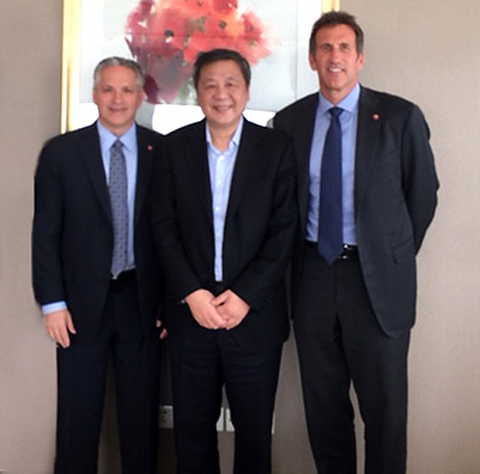Apr162015
Posted at 2:54 PM
Guest blog post by Tom Georgis, SVP Development, SolarReserve
The Department of Commerce and Department of Energy’s 2015 joint business development trade mission to China marks SolarReserve’s third participation in a remarkably well-organized and constructive trade mission led by US Secretary of Commerce Penny Pritzker. SolarReserve team members previously attended trade missions to the Middle East and West Africa. Based on the success of these missions, we eagerly joined Secretary Pritzker on this landmark mission to China intended to showcase how American businesses have the technology and expertise to drive economic growth while reducing carbon emissions, a path critical to addressing global climate change. Involvement in this trade mission is enabling SolarReserve to better understand China’s renewable energy goals, requirements and timelines, advance relationships with key stakeholders to enable export of our US developed technology and services to the region, and heighten awareness of our company and technology with senior political and business officials.
SolarReserve is a leading global developer of utility-scale solar power projects, which include electricity generation by solar thermal energy and photovoltaic panels. In addition, SolarReserve has commercialized a proprietary advanced solar thermal technology with integrated energy storage that solves the intermittency issues experienced with other renewable energy sources. This proven US-developed technology generates renewable baseload and dispatchable power and can compete with traditional fossil-fired and nuclear electricity generation. The company currently has more than $1.8 billion of projects in construction and operation worldwide, with development and long-term power contracts for 476 megawatts (MW) of solar projects representing $2.8 billion of project capital.
The robust solar resource and high altitudes of Western China are ideal for SolarReserve’s technology. We are in the process of advancing strategic partnerships that will facilitate the deployment of this advanced technology in China and reduce coal fired generation through effective project development, sourcing, and operations. SolarReserve’s technology has the added benefit of being able to absorb significant excess grid power. This will mitigate the solar and wind curtailment events currently occurring in China, allowing those intermittent generators to continue operating while enabling SolarReserve’s projects to deliver 100% renewable power in times of greatest need.
Preliminary high level overviews from U.S. Ambassador to China Max Baucus, Secretary Penny Pritzker, and Energy Deputy Secretary Dr. Elizabeth Sherwood-Randall kicked off day one of the mission followed by more detailed in-depth briefings on China economy, energy policy, IP, clean tech, renewable energy, and general politics from US Embassy, DOE, and DOC staffers. Significant policy discussions focused around the announcement made in November 2104 by President Obama and President Xi in Beijing regarding the US and China’s post-2020 climate objectives were deliberated in detail.
It’s becoming increasingly apparent that the global demand for both renewable energy and energy storage is growing—discussions this week highlighted this urgency. Expected to grow 45% by 2020, the global demand for renewable energy will require over $1.1 trillion of investment; after global investments topped $270 billion in 2014. As renewable energy penetration grows, the need for utility-scale renewable generation with storage technology is increasingly important to mitigate intermittency problems, deliver power into peak demand periods, and support transmission system reliability. In line with this week’s discussions on climate change, innovation and deployment of clean technologies, SolarReserve looks forward to being a part of increasing non-fossil fuel generation in China to 20% by 2030 and significantly reducing GHG through advancements in innovative clean utility-scale electricity generation.
We look forward to building on relationships we have formed with policy makers, innovators and industry leaders involved in this delegation. We are honored to continue to contribute to critical discussions to help China drive economic growth while reducing carbon emissions and pollutants, and help mitigate the long-term threat of global climate change with the deployment of clean energy solutions.


